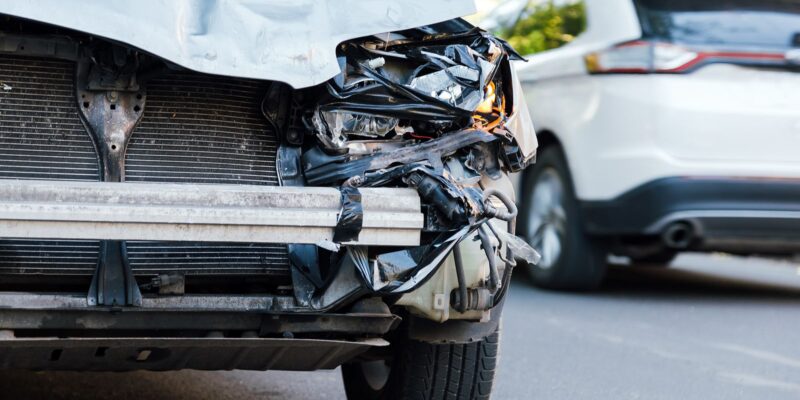When a crash on the Major Deegan sidelines a delivery driver who just clocked out from a construction shift, it creates a legal tangle most people aren’t ready for. They’re suddenly juggling medical appointments, two insurance systems, and a maze of deadlines, while the rent’s still due. That’s where experienced Bronx Car Accident Attorneys earn their keep: by coordinating overlapping claims and protecting every available dollar of recovery. This guide breaks down how dual traffic and job-site cases work in New York, why the right experts matter, and what comes after the settlement so injured New Yorkers can actually rebuild their lives.
Coordinating dual claims involving traffic and job-site injuries
A surprising number of serious injuries in the Bronx straddle two worlds: a motor vehicle collision and a construction or industrial setting. Think: a flagger struck by a van at a curbside work zone, a carpenter rear-ended while transporting tools between sites, or a rideshare driver injured while delivering materials to a job. Each fact pattern triggers different insurance coverages and duties.
Here’s the practical framework attorneys use to keep these matters on track:
- Identify every coverage immediately
- No-fault (PIP) from the striking vehicle or the injured person’s policy
- Workers’ compensation through the employer’s carrier if the injury arose out of and in the course of employment
- Third-party liability: negligent driver, owner, contractors, property owners, municipalities, or product manufacturers
- Uninsured/Underinsured Motorist (UM/UIM) and Supplemental UM (SUM) coverage, often crucial when limits are low
- Sequence the claims without waiving rights
- File no-fault within 30 days and comp within statutory deadlines
- Preserve third-party claims (generally a three-year statute for negligence: shorter notice periods for municipal defendants)
- Calendar SUM notice and consent-to-settle requirements to avoid coverage forfeiture
- Manage liens and offsets
- Workers’ comp has a statutory lien and right of reimbursement under WCL §29 on third-party recoveries
- No-fault can offset certain duplicate benefits but generally doesn’t assert liens the way comp does
- Coordinate health insurer subrogation and Medicare conditional payments early
- Capture job-site theories of liability
- New York’s Labor Law §§240(1) and 241(6) may apply if elevation or specific industrial code violations are in play, even if a vehicle is involved at the site perimeter
- Premises negligence and traffic-control plans can implicate owners, GCs, and traffic subconsultants
Done right, overlapping claims become a scaffold for full compensation, not a source of delay. Done wrong, missed notices and uncoordinated settlements can leave money on the table.
How no-fault laws intersect with workplace-injury compensation
New York’s no-fault (PIP) system and workers’ compensation both aim to get medical care and wage replacement moving fast, but they operate differently.
- What PIP covers
- Basic PIP generally provides up to $50,000 for reasonable and necessary medical expenses, 80% of lost earnings up to statutory caps, and certain incidentals, regardless of fault
- PIP priority depends on which vehicle is involved and policy language: pedestrians are typically covered by the striking vehicle’s policy
- Serious injury threshold (Insurance Law §5102) gates pain-and-suffering claims in auto cases
- What workers’ comp covers
- Medical treatment under fee schedules and wage benefits based on average weekly wage and impairment ratings
- No pain-and-suffering damages, but comp pays regardless of employer fault
- Comp carrier obtains a lien on third-party recoveries and a future-credit offset
- When both apply
- If a worker is hit by a vehicle in the course of employment, comp is primary for medicals and wages. PIP may step back or coordinate as secondary depending on status (e.g., pedestrian vs. occupant) and endorsements
- Settlement strategy must account for WCL §29 consent, lien reduction negotiations (made equitable through case law), and General Obligations Law §5-335, which can limit health-plan reimbursement in some tort settlements
- Practical tips
- Submit medical bills promptly to the correct payer to avoid denials for late submission
- Track diagnostic codes and body parts claimed across systems to keep records consistent, discrepancies become defense fodder
- For auto claims, document “serious injury” with objective findings (MRIs, range-of-motion deficits, surgical recommendations) early
Navigating these intersections is where seasoned Bronx Car Accident Attorneys protect value: they make sure the right insurer pays the right bill at the right time, while preserving the tort case for non-economic damages.
Reconstructing multi-factor accident scenes with expert testimony
Complex Bronx incidents rarely hinge on a single mistake. Lighting, sightlines, traffic-control phasing, site logistics, and human factors all play a role. That’s why credible experts can make or break liability and causation.
Key expert disciplines in dual traffic–construction cases:
- Accident reconstruction and human factors
- Time–distance analyses, stopping sight distance, conspicuity, and driver expectancy
- Photogrammetry using site photos and lidar to map vehicle paths and pedestrian movement
- Work-zone safety/traffic control
- MUTCD compliance, taper lengths, channelizing devices, flagger visibility, and night operations
- Whether the traffic-control plan matched field conditions, often it doesn’t
- Biomechanics and life care planning
- Mechanism-of-injury opinions linking forces to herniations, fractures, and TBI
- Future medical needs: revision surgeries, pain management, PT, durable medical equipment
- Vehicle data and video
- Event Data Recorder (EDR) downloads for speed, braking, and delta-V
- Telematics from fleet vehicles: CCTV pulls from DOT cameras and nearby businesses
- Construction safety and Labor Law
- Industry experts addressing scaffold/ladder practices, site coordination, and New York Labor Law compliance
Practical move: lock down the scene early. Counsel should send preservation letters within days, request EDR downloads before vehicles are destroyed, and canvas for private cameras. A well-prepared expert can translate a chaotic intersection, say, East 149th and the Grand Concourse at dusk, into a clear narrative a Bronx jury trusts.
Bronx case statistics revealing rising pedestrian-injury trends
Public data shows why these cases matter. While citywide traffic safety has ebbed and flowed since 2020, the Bronx has carried a disproportionate burden, especially for people on foot.
- Reported injuries: NYC Open Data crash records reflect multi-year increases in reported pedestrian injuries in several Bronx precincts from the late 2010s into the early 2020s, with volatility during the pandemic period and renewed pressure as traffic volumes rebounded in 2022–2024
- High-injury corridors: The Grand Concourse, East 138th Street, Fordham Road, and Bruckner Boulevard repeatedly appear on high-injury lists in Vision Zero profiles and borough action plans
- Speed and visibility: Nighttime and left-turn crashes remain overrepresented in serious pedestrian harms, per NYC DOT summaries
Numbers alone don’t tell the story, but the pattern is clear: more exposure, more construction near mixed-use corridors, and higher delivery traffic add risk. Those trends make thorough investigations, and assertive claims handling, non-negotiable for Bronx pedestrians injured around active work zones.
Cross-practice legal teams improving client recovery outcomes
The strongest results often come from collaboration. A motor-vehicle litigator may know every quirk of SUM coverage, while a construction-injury lawyer lives inside Labor Law and site logistics. When they coordinate, clients benefit.
What that looks like in practice:
- Intake and issue spotting
- From day one, teams flag Labor Law theories, municipal notice requirements, and auto coverage stacking opportunities
- Unified evidence plan
- One discovery roadmap covers EDR, roadway design files, and construction records (daily logs, toolbox talks, subcontracts, and site safety plans)
- Settlement choreography
- Staggered or global settlement strategies that preserve SUM claims, obtain WCL §29 consent, and maximize lien reductions
- Damages storytelling
- Life care planners, vocational experts, and economists build a single, consistent picture of medical needs and lost earning capacity
Firms that handle both domains under one roof, or that have tight referral partnerships, tend to avoid the classic pitfalls: missed SUM deadlines, underdeveloped Labor Law claims, or a comp lien that eats too much of the net recovery. For readers seeking a team familiar with Bronx courts and job-site litigation, the Bronx Car Accident Attorneys at the Jacob Fuchsberg Law Firm can be a resource: https://www.fuchsberg.com/.








Comments